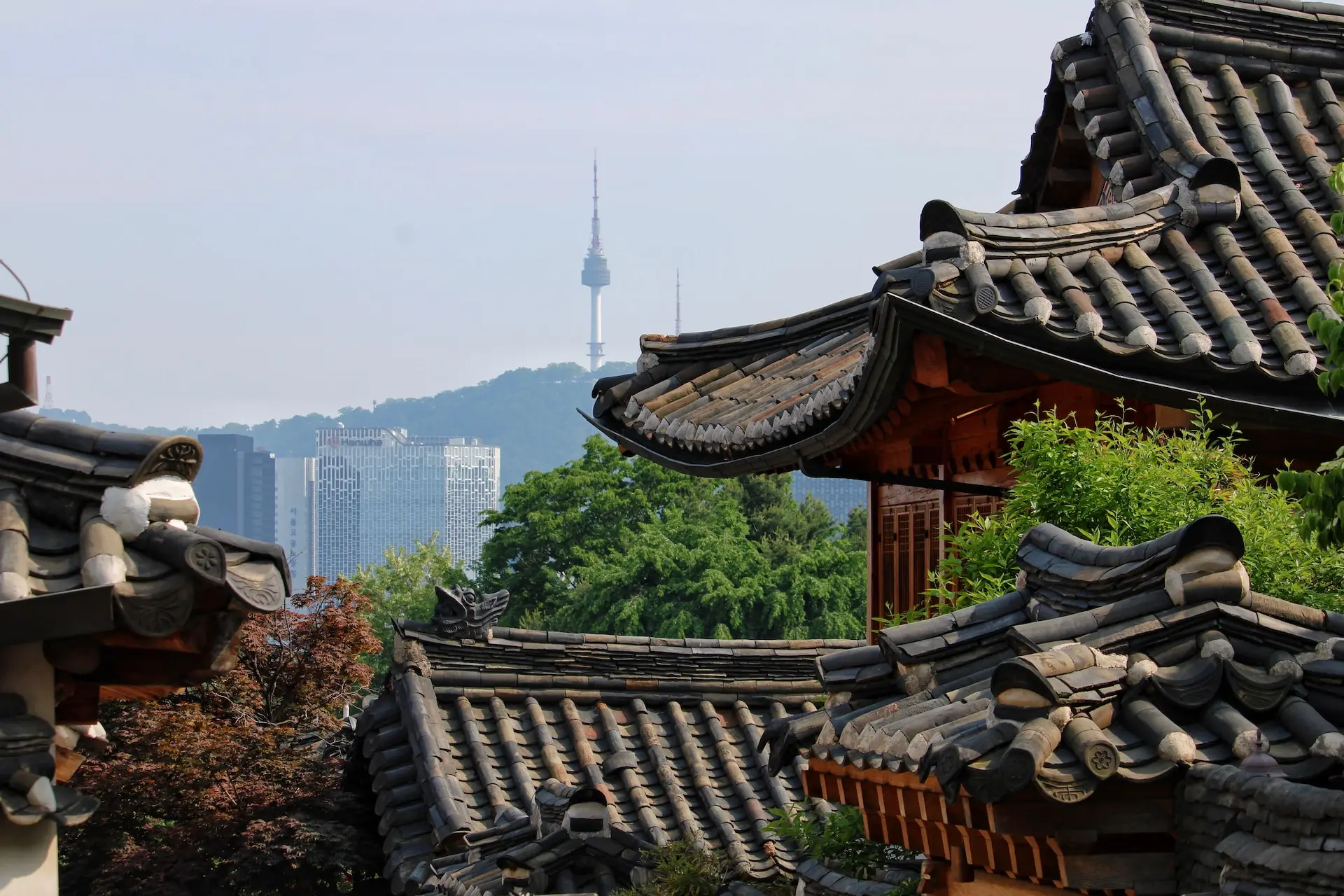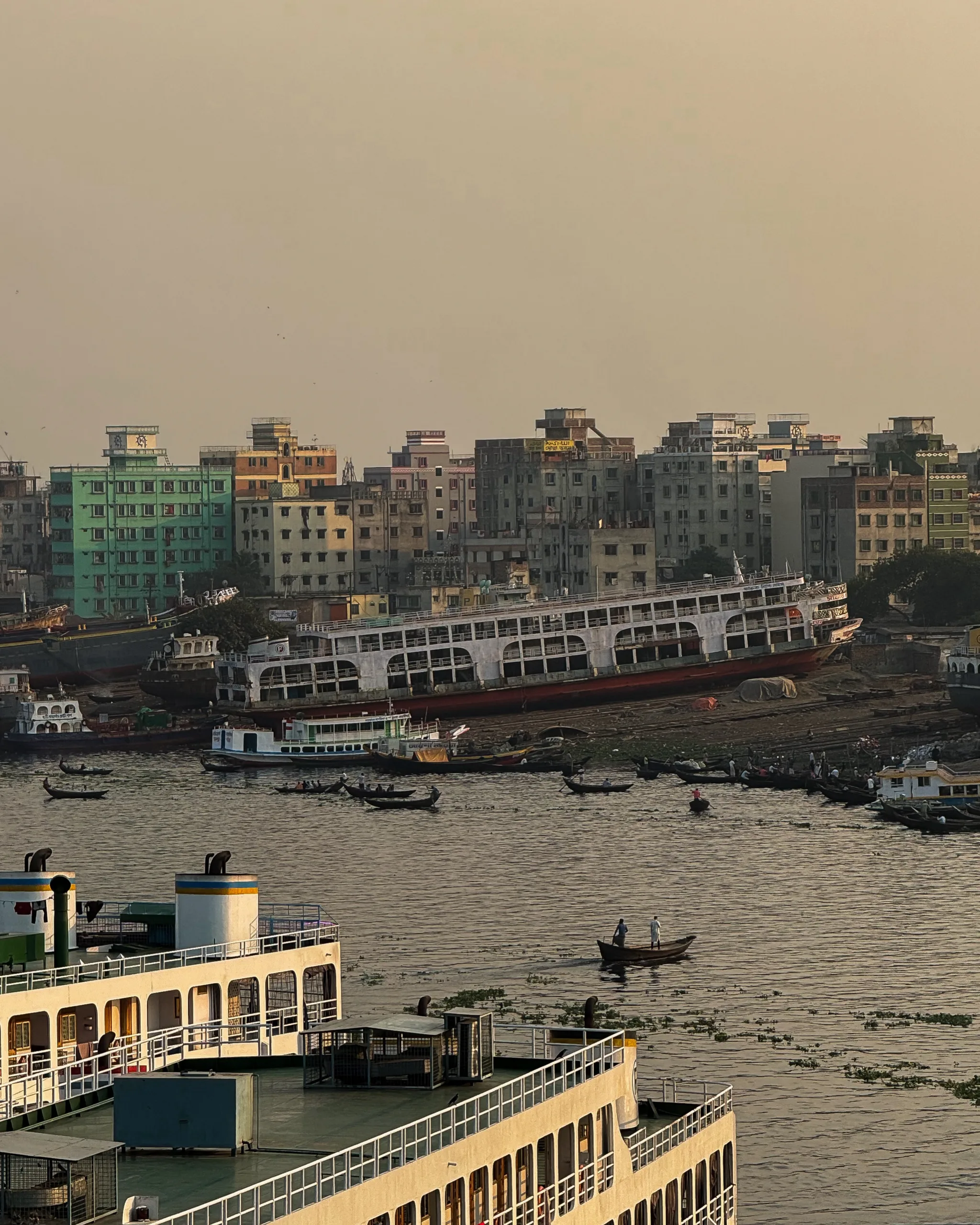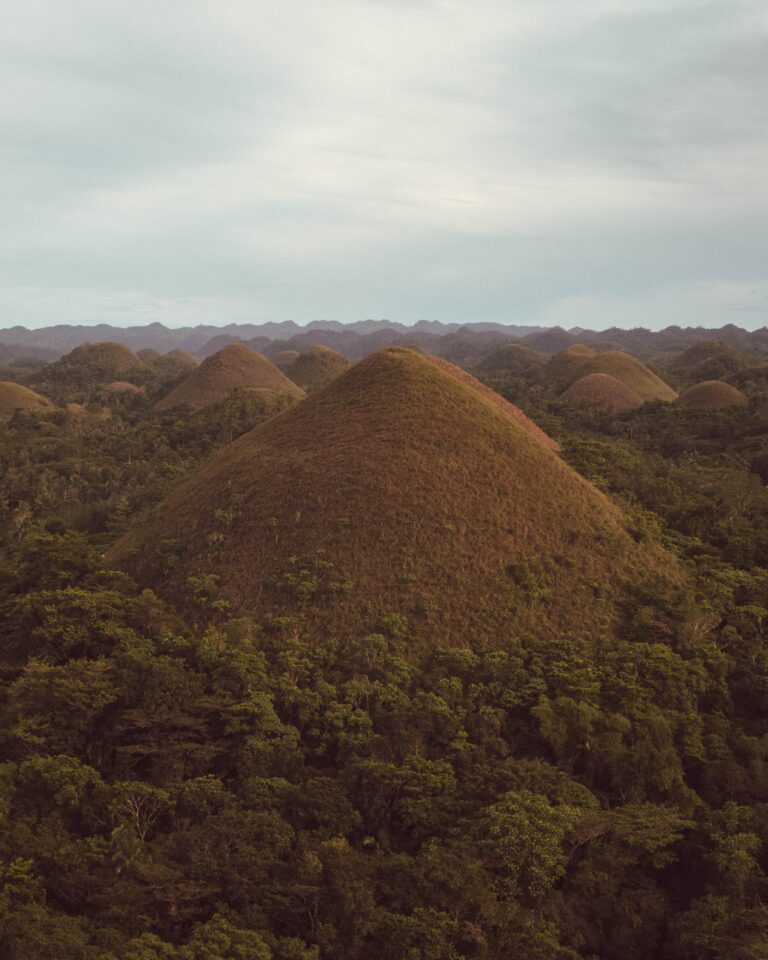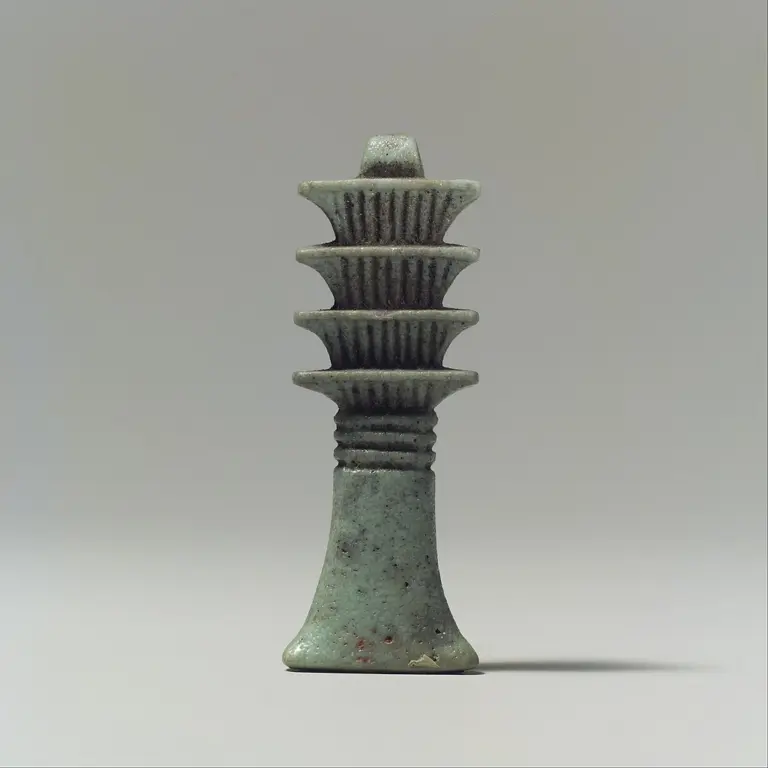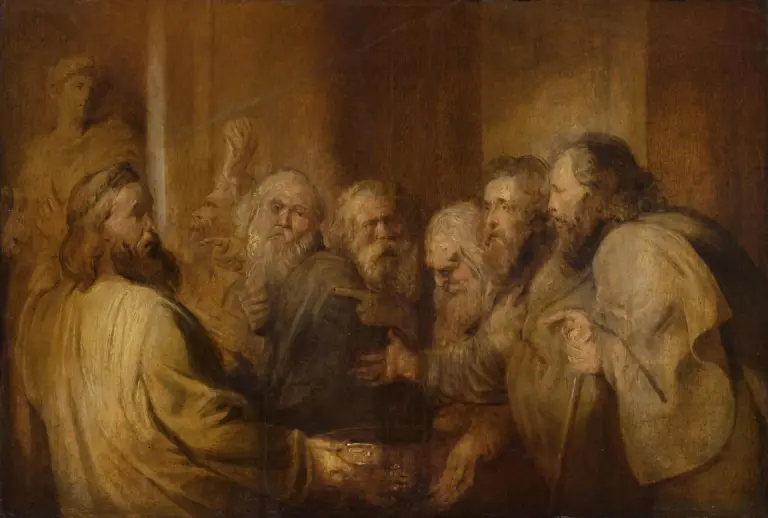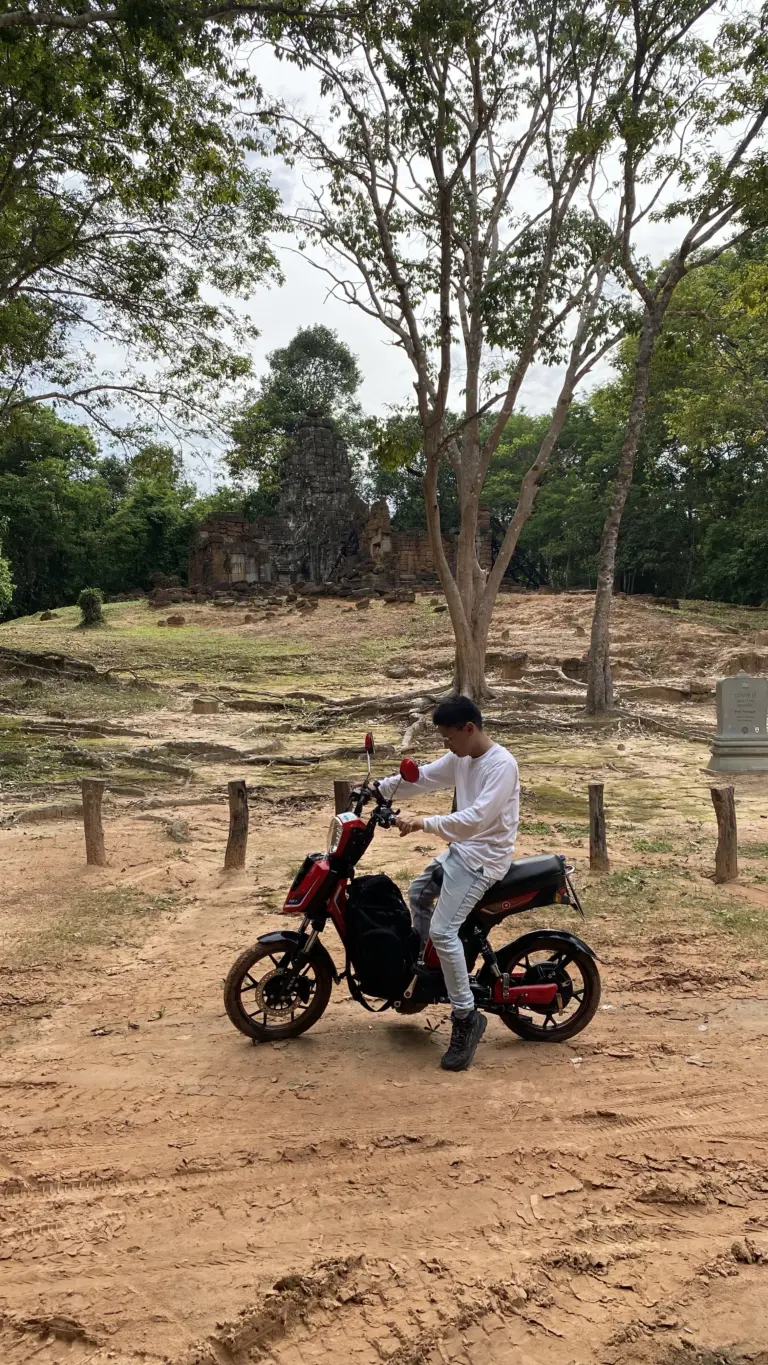Escape to Enoshima.
Just a stone’s throw away from the historic Kamakura, this charming island offers historical lore, scenic nature, and close encounters with the residential cats.
Yes, you read that right! Enoshima is actually one of Japan’s many cat islands!
Here, myth intertwines with reality; the island is steeped in tales of Benzaiten, one of the Seven Lucky Gods.
But there’s more to Enoshima than just folklore and felines. You can explore the hidden wonders of the Iwaya Caves, soak in the breathtaking views of Mt. Fuji, or indulge in the freshest seafood delights.
Enoshima’s unique atmosphere, where the sacred meets the surf, makes it a perfect destination if you’re seeking both cultural immersion and a relaxed beach vibe.
Table of Contents
Toggle
History of Enoshima
Enoshima first gained historical prominence in the 8th century, as evidenced by its mention in the “Nihon Shoki,” one of Japan’s oldest chronicles. This period marks the beginning of its religious importance, particularly in connection with Benzaiten, who is central to the island’s lore.
By the Heian period (794–1185), Enoshima had established itself as a prominent spiritual center. The island was a popular pilgrimage site for the worship of Benzaiten. The Enoshima Engi, a collection of Japanese legends, written during this period, details the island’s creation and its association with the goddess.
During the Kamakura period (1185–1333), with the rise of the Kamakura Shogunate, the island’s proximity to the political center of Kamakura city increased its significance.
The Edo period (1603–1868) brought about a transformation in the island’s character. It became a popular spot for leisure and entertainment, particularly among common people. This era saw the growth of the island as a tourist destination, with an emphasis on its natural hot springs and burgeoning beach culture which continues on to this day.

The Legend of Enoshima
The legend of Enoshima is a tale centered around Benzaiten, the goddess of everything that flows: water, music, and words. As one of the Seven Lucky Gods in Japanese mythology, her influence is seen in both Buddhist (See also: Mahayana Buddhism and Japanese Buddhism) and Shinto traditions. But it’s her connection to Enoshima that adds a layer of enchantment to this scenic island.
According to the legend, in the 6th century, a fearsome five-headed dragon named Gozuryu terrorized the region, causing havoc and preventing the local villagers from living in peace. The dragon lived in a cave on the coast, close to where Enoshima would later emerge. The villagers prayed for deliverance from this menace.
Benzaiten, hearing these prayers, created the island of Enoshima, rising it from the sea to serve as her home. Intrigued by her beauty, Gozuryu fell in love with Benzaiten. However, Benzaiten saw this as an opportunity to convince the dragon to change its ways. She told Gozuryu that she would marry him if he vowed to cease his destructive behavior and bring prosperity and safety to the land. The dragon agreed and true to his word, the region flourished. Which is why you’ll find plenty of shrines with dragon motifs.
Over the centuries, this legend has deeply influenced the culture and spiritual life of Enoshima. Shrines dedicated to Benzaiten popped all over the island. The most notable among these is the Enoshima Shrine, a complex of three shrines (Hetsumiya, Nakatsumiya, and Okutsumiya) scattered across the island, each celebrating a different virtue of the goddess.
The cave, once the dragon’s home, known today as the Iwaya Caves, is one of the must-visits and you can learn more about the lore of Enoshima there.

How to Get to Enoshima
Getting to Enoshima is quite straightforward, particularly from Tokyo and nearby cities like Yokohama. Here’s a simple guide:
From Tokyo:
- By Train: The most common way to reach Enoshima from Tokyo is by train. You can take the Odakyu Electric Railway from Shinjuku to Fujisawa station. From Fujisawa, switch to the Enoden Line, which will take you directly to Enoshima Station. The journey takes about an hour and a half.
- Odakyu Enoshima-Kamakura Freepass: Consider purchasing this pass (1,640 JPY) for a round-trip from Tokyo to Fujisawa and unlimited rides on the Enoden Line. It’s economical and convenient if you plan to explore both Enoshima and Kamakura.
From Yokohama: Take the JR Tokaido Line or the JR Shonan Shinjuku Line to Fujisawa Station, and then transfer to the Enoden Line for Enoshima. The total travel time is about an hour.
From Kamakura: If you’re in Kamakura and wish to visit Enoshima, the Enoden Line directly connects Kamakura Station to Enoshima Station. The ride is scenic and takes about 25 minutes.
Alternatively, you can also opt to join a tour that visits both Kamakura and Enoshima through here.
Top Things to Do on Enoshima

1. Shop at Benten Nakamise Street
Benten Nakamise Street is the first place you’ll end up in once you step foot on Enoshima.
As you approach the entrance to Enoshima Shrine, this bustling street welcomes you with its array of charming shops. The air is filled with the inviting aromas of local cuisine and the sounds of lively chatter. It’s often quite jam-packed here with good reason.
Here, you can explore a multitude of shops selling everything from traditional Japanese handicrafts, like intricately designed fans and ceramics, to a variety of unique, locally made souvenirs.
The culinary offerings on Benten Nakamise Street are a major draw. The street is renowned for its delicious local snacks and street food. You can savor fresh seafood delicacies and indulge in local delicacies like the shirasu-don (a bowl of rice topped with small white fish).
2. Eat a Tako SEnbei
While you’re strolling around Nakamise Street, keep an eye out for Tako Senbei!
Tako Senbei, literally meaning “octopus cracker,” is a local specialty.
It’s made by pressing a whole, small octopus between two hot iron plates, similar to a waffle iron. This process cooks the octopus and imprints it onto a thin wafer of rice cracker.
The result? A crispy, slightly chewy snack with the distinct flavor of octopus!

3. Climb the Sea Candle
The Sea Candle, also known as the Shonan Observatory Lighthouse, is often touted as having the best views on the island and has come to be an iconic landmark for Enoshima.
The lighthouse tower is about 60 m (197 ft) tall, including its antenna. The main observation deck is situated at a height that allows you to enjoy expansive views over the Sagami Bay.
For 350 JPY, you can access the observation deck by climbing a series of stairs. The climb is relatively easy and well worth the effort for the breathtaking 360-degree views from the top.

4. Stroll Around Samuel Cocking Garden
This botanical garden, named after the British merchant Samuel Cocking who resided in Japan during the Meiji era, was established in the late 19th century by Cocking himself.
He was an enthusiast of Western horticulture, the garden originally housed a greenhouse and a variety of exotic plants. Today, it continues to be a lush, green oasis right in the island’s center.
The garden’s well-maintained paths wind through colorful flower beds, towering trees, and peaceful green spaces, making it a delightful place for a leisurely walk.

5. Take a Dip at Enospa
Taking a dip at Enospa or the Enoshima Island Spa, is a rejuvenating experience that combines relaxation with stunning views.
Enospa is a modern spa facility that utilizes the natural hot spring waters of the area. However, I find that it is often full so it’s best to come on a weekday. The price to enter is around 3,000 JPY for adults.
The facility includes a variety of baths, such as outdoor pools, where you can soak while enjoying the view of the ocean and surrounding landscape.
One of the highlights of Enospa is the heated seawater pool, which allows you to enjoy a swim in warm water year-round. The facility also includes traditional onsen baths, both indoor and outdoor.
In addition to the baths, Enospa offers a range of treatments , including massages and spa therapies.
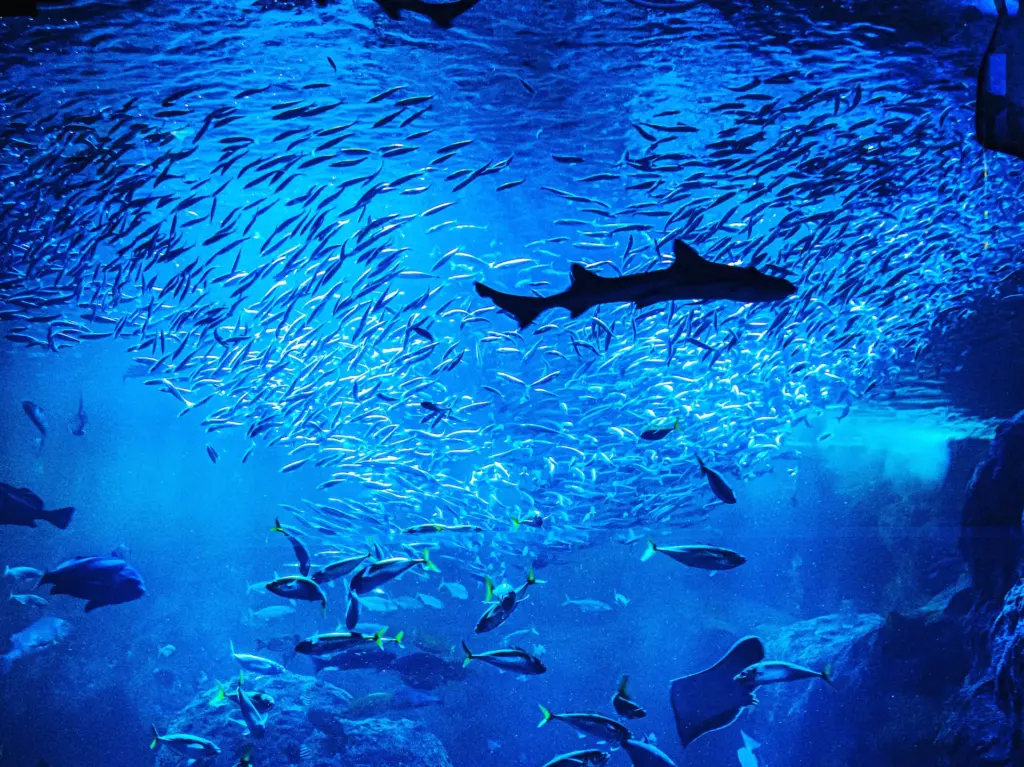
6. Admire Marine Life at Enoshima Aquarium
Ever wondered what secrets lie beneath the surface of Sagami Bay? A visit to Enoshima Aquarium is like diving into a marine adventure without getting wet!
Enoshima Aquarium offers a deep dive into the aquatic world for 2,500 JPY. One of the key features of Enoshima Aquarium is its massive Sagami Bay tank. This exhibit is designed to mimic the natural conditions of Sagami Bay and is home to a wide array of marine species found in these waters,you can find various species of fish, rays, and other sea creatures.
The jellyfish exhibit at Enoshima Aquarium is another highlight. This section showcases several species of jellyfish in a mesmerizing display, with specialized lighting that enhances their delicate forms and movements. It’s quite a stunning exhibit!

7. Ring the Bell of Love
Situated on the aptly named Lover’s Hill, the Bell of Love (Ryuren no Kane) overlooks the sea. Couples often visit this spot to ring the bell together as a symbol of their love and to make a wish for their future. The tradition is rooted in the belief that ringing this bell will strengthen relationships.
Right in front of the bell, you’ll find a fence where couples attach padlocks. While this “Lovers’ Sanctuary” has become a significant attraction for couples, the views are honestly not that bad and it’s worth checking out with or without the romantic connotations!

8. Visit the Enoshima Shrines
Visiting the Enoshima Shrines is an integral part of any trip to the island. These shrines, collectively known as Enoshima Shrine, are a trio of Shinto shrines each dedicated to different manifestations of the deity Benzaiten. Benzaiten is actually derived from the Hindu goddess Saraswati in case you didn’t know.
-
Hetsumiya: The first shrine you’ll encounter is Hetsumiya, which is located near the entrance to Enoshima. It is the oldest of the three shrines and sets the spiritual tone for your visit. Hetsumiya is dedicated to Benzaiten in her role as the goddess of fortune.
-
Nakatsumiya: As you proceed further into the island, you’ll come across Nakatsumiya. This shrine focuses on Benzaiten as the goddess of music and performing arts.
-
Okutsumiya: The final shrine, Okutsumiya, is situated at the highest point of the island, offering spectacular views. This shrine emphasizes Benzaiten’s connection to the sea.
Visiting these shrines is like a pilgrimage through the island as your journey from one end to another will most likely bring you across these three sacred sites.
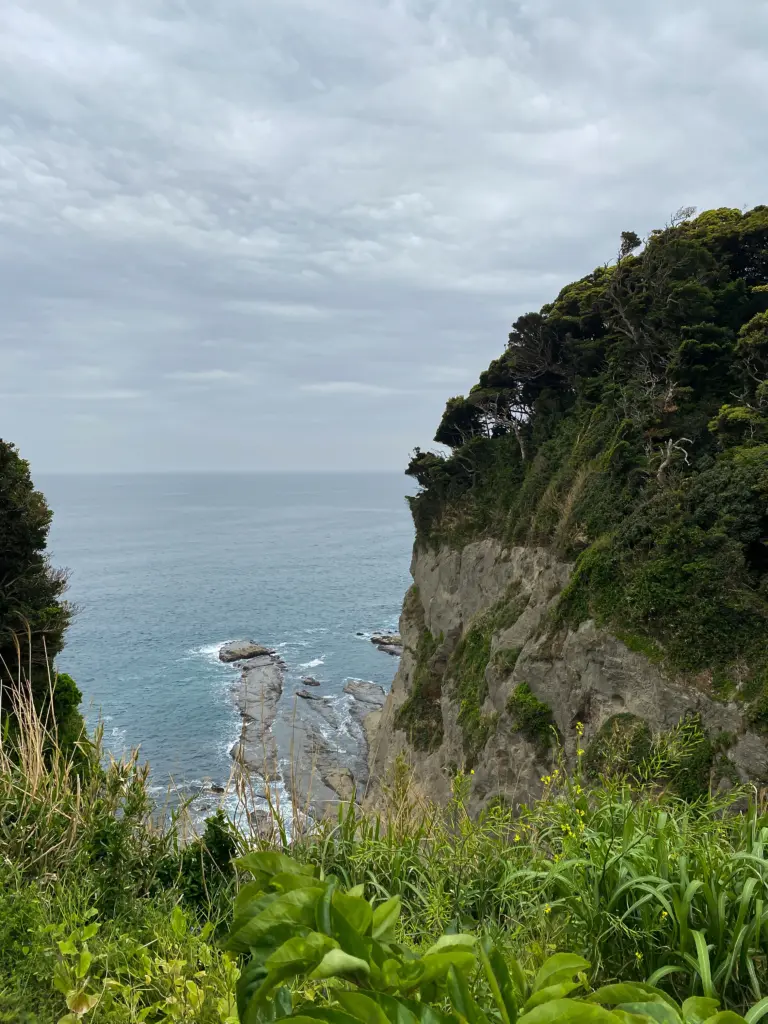
9. Spot the Yama Futatsu
Yama Futatsu, which translates to “Twin Mountains” is a unique geological formation that effectively splits Enoshima Island into two parts. This dividing line is believed to be the result of natural erosion over many years, where the tides have gradually worn away at the island’s geological strata.
The most interesting aspect of Yama Futatsu is its formation history. It’s theorized that the constant tidal action eroded a significant cave in the area, which eventually collapsed. This collapse led to the formation of the current divide, giving the location its distinctive appearance,
One of the key features to observe at Yama Futatsu is the reddish-brown stratum. This layer is particularly noteworthy because it is composed of loamy soil from the Kanto District, formed from the volcanic ash of Mt. Hakone and Mt. Fuji.
You can find it here, look to the left as it is easily missed!

10. Relax at Katase Higashiyama Beach
Katase Higashiyama Beach is known for its soft sands and clear waters, stretching along the coast near Enoshima. Just right before the bridge leading to the island.
The beach is particularly famous for its picturesque views of Enoshima and Mt Fuji.
In the evenings, it’s a peaceful time to take a leisurely stroll along the shore, enjoy the sea breeze, and reflect on the day’s experiences. Usually, we chill here a bit before the long walk back to the station.
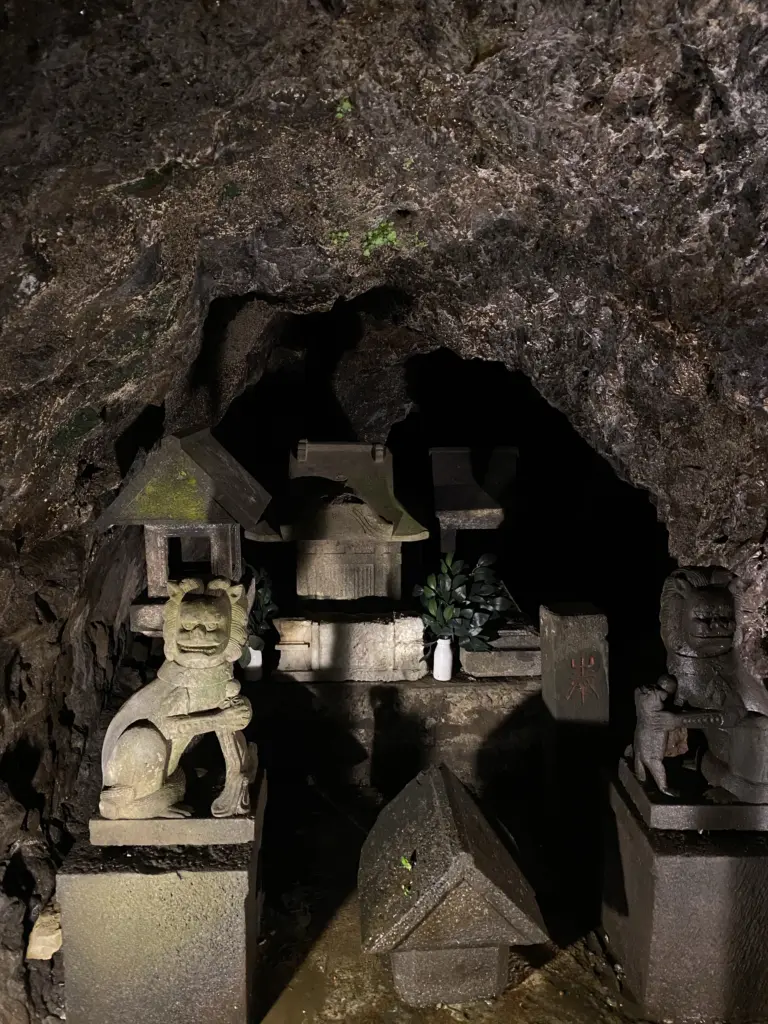
11. Explore the Iwaya Caves
The Iwaya Caves were huge and formed naturally due to the ocean tides. It was dedicated to Benzaiten, and through this cave, I really got a better understanding of her role in Japan.
Aside from the legends surrounding Benzaiten and the island, a monk also built the first shrine of Enoshima inside the caves here. The cave itself was said to be connected to the ice caves all the way to Mt. Fuji.
The Iwaya Caves were an immersive experience and it costs 500 JPY to enter. There was a projection mapping on the cave walls with the pond acting as a reflection that showed the lore of the island. To the left cave, we were give candles to carry as we went deeper, with cave sculptures of different Buddhist characters such as Benzaiten, Kannon and Amida.
The right cave had a sculpture of the dragon where by clapping in front of it, a sound from behind imitating the roar would be played.

12. Catch a Glimpse of Mt. Fuji
Mt. Fuji, known for its symmetrical cone and snow-capped peak, is a symbol of Japan and a UNESCO World Heritage Site.
On Enoshima, several vantage points offer spectacular views of this majestic mountain. One of the best places to view Mt. Fuji is from the observation deck of the Sea Candle. From here, you can see Mount Fuji rising majestically in the distance, particularly on clear days.
Another great spot is the southern coast of Enoshima, where the island’s natural elevation provides an unobstructed view of Mt. Fuji across the Sagami Bay. The sight of the mountain, especially during sunset is nothing short of awe-inspiring.

13. Find the Cats
Enoshima is home to some 200 friendly and well-cared-for stray cats. These feline residents have become a charming feature of the island, often seen lounging in the sun, wandering the alleys, or playfully interacting with visitors.
The cats of Enoshima are generally accustomed to human presence, making them approachable for lots of pets. They can be found throughout the island but are particularly prevalent in the quieter, less crowded areas, such as along the walking paths or near some of the less busy shrines and gardens.
14. Take a Boat Trip
Taking a boat trip on the “Ben Ten Maru” is a fantastic way to experience the beauty of Enoshima from the water. For 400 JPY, this pleasure boat journey, connecting “Chigafaguchi” and “Bentenbashi” at the western end of the island, offers a unique perspective of the Shonan coast.
The trip lasts about 10 minutes and treats you to spectacular views that you can’t get from the land. As you glide across the water, you’ll be able to admire the island’s rough cliffs and dense greenery.
Located just a 5-minute walk from the boarding area at Children’s Cave to Enoshima Iwa-ya, the boat trip is a convenient and enjoyable way to return to the main part of Enoshima.
It’s especially recommended if you want to save your energy after exploring the island. There’s actually a lot of hiking involved in exploring Enoshima, you know!

15. Watch the Sunset
The sunsets on Enoshima are nothing short of magical. As the day comes to a close, the island offers several prime sunset viewing spots.
One of the best places to enjoy the sunset is from the southern coast of Enoshima. Here, you have an unobstructed view of the vast expanse of the ocean, and the surrounding landscape adds so much more.
Another great place to watch the sunset is actually on the bridge or Katase Higashiyama Beach. From here, you can actually see the Enoshima’s silhouette which adds so much drama for your golden hour photography.
Where to Stay near Enoshima
There aren’t many options to stay in Enoshima aside from Enoshima Guest House, there’s another hostel listed on HostelWorld but the reviews aren’t that good. Otherwise, the nearest place to stay would be in Kamakura which is only a short train ride away from Enoshima.
Here are some of the best places to stay in Kamakura:
Best Hotels near Enoshima:
- Kamakura Cocon – stands out as an exceptional place to stay, combining traditional Japanese hospitality with modern amenities. It offers free private parking, a hot tub, and comfortable accommodations. Each room at this ryokan is well-equipped with air conditioning, a flat-screen TV with streaming services, a kitchenette, and a private bathroom with a hot tub. You can enjoy additional conveniences like a 24-hour front desk, free Wi-Fi, a restaurant, and even yoga sessions.
- Kakiya Ryokan – just a 3-minute stroll from Enoshima Beach, offers an authentic Japanese stay with tatami-floored rooms and traditional futon bedding. Esteemed for its cleanliness and comfort, this ryokan boasts amenities like free Wi-Fi in the lobby, a 24-hour public bath, and a renowned restaurant specializing in Shirasu fish meals.
- Hotel Metropolitan Kamakura – a distinguished 4-star hotel. This hotel offers air-conditioned rooms with modern amenities including a flat-screen TV with satellite channels, an electric tea pot, a bidet, complimentary toiletries, and a closet. Each room is also equipped with a safety deposit box, and some offer city views. The hotel’s multilingual staff at the 24-hour reception are fluent in English and Japanese, ready to assist.
Best Hostels near Enoshima:
- Enoshima Guest House – opened in October 2016, is a charming hostel embracing a concept centered around sea-loving travelers, this guest house offers a variety of accommodations suitable for solo travelers, couples, and families. It features an on-site restaurant, a shared lounge, an outdoor terrace, and activities like table tennis and board games. You can also rent bicycles to explore the area.
- Guest House Kamejikan – offers a blend of traditional Japanese and modernity. This non-smoking guest house, set in a building that’s 92 years old, provides both simple Japanese rooms with futon bedding on tatami floors and dormitory-style bunk beds, all with free WiFi and shared shower facilities. Amenities include air conditioning, a communal fridge, PC access, free coffee/tea, a coin launderette, and 24/7 showers. You can also rent bicycles, bodyboards, and yukata robes.
- Kamakura Rakuan – is a non-smoking establishment that features a garden, free WiFi, and a shared lounge. The hostel provides practical amenities like a shared kitchen, babysitting service, and luggage storage. Each air-conditioned room is equipped with a fridge, oven, coffee machine, and free toiletries, sharing a bathroom with a hairdryer. Ideal for outdoor enthusiasts, the area is great for hiking and cycling, with bike rentals available on-site.

How to Get Around Enoshima
Given its small size, Enoshima is very much meant to be explored on foot, though there are plenty of stairs and some hiking is somewhat involved, so you can also use the outdoor escalators for a fee of 360 JPY. Here’s how to get around the island:
Walking: Walking not only gives you the flexibility to explore at your own pace but also ensures you don’t miss the numerous smaller shrines, shops, and scenic spots that are dotted around the island.
Enoshima Escar: For those who prefer not to climb the steep hill to reach the main attractions, the Enoshima Escar, an outdoor escalator system, is available. It provides a convenient and quick way to move up and down the island, especially useful for visitors with mobility issues or those traveling with small children.

Best Time to Visit Enoshima
The best time to visit Enoshima is during late spring, particularly from late April to early May. This season offers mild and enjoyable weather, with temperatures typically ranging between 15°C – 20°C (59°F – 68°F). It’s ideal for exploring the island’s attractions comfortably and you’ll avoid the peak tourist crowds, allowing for a more relaxed visit.
In summer, from June to August, Enoshima becomes a popular beach destination with warm weather, usually around 20°C – 30°C (68°F – 86°F). This is the time for vibrant festivals and beach activities, although it tends to be humid and crowded.
Autumn, from September to November, is a quieter time with cooler temperatures, about 15°C – 25°C (59°F – 77°F). The changing colors of the leaves add to the island’s beauty.
Winter, from December to February, offers clear skies and crisp air, with temperatures ranging from 5°C – 10°C (41°F – 50°F). The views of Mount Fuji are often at their best, and the island is peaceful with fewer tourists.
Plan Your Trip to Japan | Best Travel Resources
Book Your Accommodations
- Booking.com – the world’s leading online booking platform for accomodations around the world, they have an extensive amount of available listings with zero booking fees and best price guarantees.
- Hostelworld – a backpacker’s best friend, Hostelworld has the largest collection of hostels and guesthouses for affordable prices.
Don’t Forget Insurance
- SafetyWing – from Nomad Insurance, an insurance by nomads for nomads. They understand our lifestyle well and have really comprehensive and flexible plans that cater to any traveler.
Find Cheap Flights
- Kiwi.com – my go-to for booking and finding the cheapest flights and it’s helped me save tons of money. They do virtual interlining which is connecting flights from airlines that do not codeshare, so you can find routes that you wouldn’t be able to find normally.
Join Tours & Activities
- GetYourGuide – is one of the best places to find unique tours and activities. I found that it’s an excellent way to meet fellow travelers and create fond memories. They are not only limited to tours as they also offer niche services such as skip-the-line tickets or private transfers.
Catch a Ride
- Rentalcars.com – nothing beats the freedom of the road, Rentalcars.com is the world’s largest online car rental service. They operate across 160 countries so they’re the perfect partner to work with if you find yourself wanting a ride.

